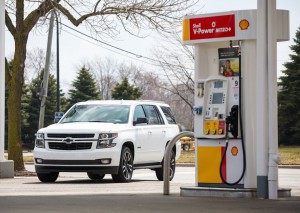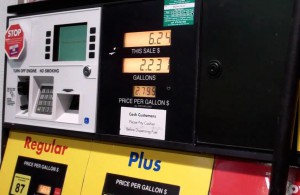
Gas prices jumped due to recent weather and infrastructure events, but the rise has leveled off this week.
An unseasonal rise in the cost of gasoline this autumn appears to have leveled off this week, according to AAA.
At $2.89, the national gas price average is 2 cents cheaper than it was a week ago amid consumer gasoline demand declining for a third week. But the price of gasoline, on average, is 4 cents more than a month ago and 42 cents more expensive than in October 2017.
The majority of states have seen gas prices decrease on the week with the exception of a handful of states, some of which were impacted by fuel disruptions on the west coast and in the southeast.
“Gas prices may be signaling that they are taking a turn toward slowly decreasing, which is a welcomed change for motorists who have been paying unseasonably high pump prices to fill-up as of late,” said Jeanette Casselano, AAA spokesperson. “Two events last week caused small spikes in retail prices, but those spikes are short-lived,” she added.
(Porsche may add battery-electric Macan next, hints CFO. Click Here for the story.)
On Oct. 12, Hurricane Michael made landfall in Florida and subsequently caused retail fuel shortages along its path in Alabama, Florida, Georgia, North Carolina and South Carolina. Roadway clean-up efforts are underway and as power is restored, fuel deliveries will be a priority.
In addition, last week, a natural gas pipeline rupture in the Western Canadian province of British Columbia forced three refineries around Puget Sound in Washington to shut down production units. Those refineries are beginning to resume normal operations, but states in the Pacific Northwest saw spikes in gas prices that will likely last into the week, Casselano said.
Even with the landfall of two devastating Hurricanes this fall, gasoline prices remain the lowest in the Southeast, while gasoline prices have touched the $4 per gallon in California. Pump prices also have dropped in Ohio and Michigan during the past week.
Meanwhile global oil markets remain unsettled.
(Click Here for more about the 2019 BMW i3 with a 153-mile battery.)

Oil prices are in a state of flux with Saudi Arabia's potential involvement in the death of a U.S.-based journalist.
On the NYMEX, crude prices increased 37 cents to settle at $71.34. Oil prices also dropped last week, after the major selloff that occurred for the Dow Jones Industrial Average.
However, crude prices may continue to climb this week as tensions in the Middle East take center stage with scandal surrounding the government of Saudi Arabia’s role in the death of U.S.-based journalist. U.S.-imposed sanctions on Iran’s energy sector continue to loom over the market.
The slight gains crude prices saw at the end of last week occurred despite total domestic crude inventories growing to 410 million barrels last week, according to EIA’s latest weekly petroleum status report.
However, crude storage levels are 52.2 million barrels lower than where they were this time last year. The year-over-year deficit has contributed to rising crude prices, which has led to the most expensive fall gas prices since 2014, according to AAA.
Increased drilling in the U.S. hasn’t helped bring down the price of fuel at the pump, since Russia and Saudi Arabia have continued to curtail production in an effort to boost prices on global market.
(To see more about GM expanding its electric vehicle leadership team, Click Here.)
Baker Hughes Inc., which tracks drilling activity, reported that the U.S. gained eight oil rigs last week, bringing the total to 869. When compared to last year at this time, there are 126 more rigs now than in 2017, AAA noted.

